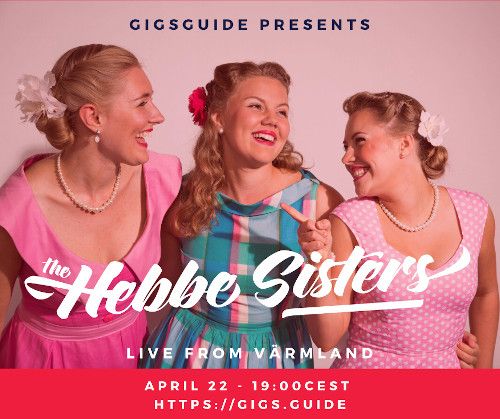It has now been almost two months since we started listing "online" live events.
During this period, we have been spending a significant part of our awake time looking for "online" events to add to the directory. So far, we have helped promote over 3000 of them (in itself, not a bad achievement for a startup of 2 - with a little help from our friends - and no money).
This also means that by now we have practically seen it all. So I thought I'd put together a list of the silliest mistakes I see many artists/venues/promoters do when it comes to planning, advertising and performing their livestreamed gigs - and some simple suggestions on how to do it better.
1. Don't play "hard to get"
I could write a book (of horrors) about the length certain people will go to make sure nobody ever finds their online event.
In no particular order, here are some of the things that had me scratching my head a few times over the last few weeks:
- Posting "Hi guys, I'll be streaming in 10 minutes, come join me!" on various Facebook groups. Sure, we are all stuck at home. It doesn't mean we got nothing else to do though. Being spontaneous is great, but if you go live on the spur of the moment don't expect a lot of people to show up. Giving people at least 2-3 days heads up (and spending this time spreading the word) is definitely a good way to increase the odds that your mom and her cat will not be the only ones there.
- Forgetting to clearly write the date, the time and the timezone. "It's 5 o'clock somewhere" is not going to cut it when people can tune in from all over the world. Not everybody is going to see your post right away, so just writing "tomorrow" or "on Friday" can be quite confusing.
- Forgetting to tell people where the stream is going to be available. I blame Instagram and its "publish this update also on Facebook/Twitter" function for this. Very often, we look at posts about live events and have to spend a lot of time looking for clues about which platform(s) will the stream be published on.
- Putting all the relevant event info only on the poster. I blame Instagram (again :)) and the "visual" culture it promotes for this one. Don't get me wrong, making a really cool poster for a virtual event is a very nice touch. It is, however, not very smart to put all the event information only on the nicely designed poster. If you are posting it online - and not simply sticking it onto a wall - then all the event's key information should be written in the description field too, so they are easier to find also via search.
- Running a "24 hours marathon of music" without providing a full list with the names of performers (and no, just listing their social media handles is not good enough) and the time they will perform (I know you want people to watch the whole thing, but not telling them when their favourite artist will play will just increase their chances of missing it).
In short, the more work - and guesswork - you make people do, the more likely they are to go somewhere else (particularly when that "somewhere else" is just a click away).
2. The world is your oyster (particularly in quarantine)
Streaming a live performance can be an excellent way for artists to stay in touch with their existing fan base and the followers they already have on social media.
At the same time, one of the few positive aspects of the current situation is that people all over the world are stuck at home and looking for good quality entertainment online.
The main reason we were excited about listing "virtual" gigs here on GigsGuide is that, if people do not have to physically "be" somewhere to "go" to a gig, this is actually the perfect time for them to discover new artists from all over the world. Artists they would have probably never come across "in real life" and that can now become new favourites to follow (and, eventually, hopefully soon, go see play live for real).
Yet, I see many artists only focusing on the followers they already have and neglecting such a simple (and free!) opportunity to acquire new ones around the world.
So even if you don't think anybody except your mom cares about your "bagpipe rap metal for children" project, make an effort and add also a short description in English when you post about the event.
If you are asking for donations or selling records/merch, listing only local options (like Venmo in the US or Swish in Sweden) or asking people to do a bank transfer (Why do Italians hate credit cards so much? :D) is going to make it very hard for your new international fans to support you. So make sure you include at least one payment option that is easily accessible from abroad, like Paypal or Stripe.
A word from our sponsors
For a lot of these things, it actually helps telling us about the events you are planning to run.
GigsGuide takes care of formatting dates and times correctly. We also automatically add information about the performers so that it is easier for people to navigate all the events available and find the ones that best match their preferences. Fans can also save an event to their own calendars and share them with their friends.
We have actually been pleasantly surprised to see a few artists using their event listing page on GigsGuide as landing pages to promote their events through their own social channels too.
Recently, we have also started hosting live streaming events directly on the GigsGuide event pages: the first "GigsGuide presents..." featured The Hebbe Sisters, three amazingly talented jazz singers from Sweden.

You can still watch it here (or join us next week for another one).
3. Have a plan!
Saying that Corona caught us all by surprise would be the understatement of the century (trust me on this, I am the guy who was busy building a travel service for concert-goers when this shit hit the fan).
While a few artists were already live streaming long before it was cool, for most of the others this was completely uncharted territory and something that we are all basically making up as we go along.
Yes, over the last 2 months we have seen even established artists (those that should have a team of professionals behind them) make all sorts of silly mistakes with their livestreams.
But we have also seen some truly remarkable stuff as well. Like Frank Turner single-handedly saving venue after venue, week after week, always from the comfort of his own living room (fun fact: I discovered Frank through his livestreaming events... Now I can't wait to see him live :)).
I am convinced that live streaming should not be treated as a poor replacement for regular concerts, to be ditched as soon as things "go back to normal". Particularly for those that understand how to leverage this new medium to create new types of experiences and ways to connect with their audiences, it has all the potential to become a significant additional tool to generate revenue and grow a fan-base.
I think there are number of valuable lessons to be learned here.
The first is that you should not do it simply because everybody else is. There are plenty of other things you can do to engage with your fans, so focus on what works for you.
If you do decide to take the plunge, then make sure to have clear objectives for what you want to achieve by livestreaming your performances.
What do you want your audience to do? Buy a ticket? Follow you on social media? Donate? Buy your record or your t-shirt? Whatever that is, you should make sure you communicate your "call to actions" clearly and consistently, and that you make it as easy as possible for them to take action.
This was actually one of the main reasons we started hosting gigs on GigsGuide: drive more "conversions" for the artists by making call to actions like "donate via Paypal" as visible and quick to operate as possible.
The type of interaction you want to stimulate should also influence the choice of platform to use and the type of content to include. There is clearly no one-size-fits-all, proven recipe here, so have fun testing different delivery methods and different formats to figure out what works best for you and your fans.
Finally, a short remark about the importance of taking the time to get at least a basic understanding of how streaming works, learn how to use the streaming software (OBS is a popular choice, but there are loads of other solutions out there) and do some tests (I have seen quite a few "live streaming events" that for the most part were about the performer trying to figure out why nothing was working... Don't be that guy).
And while we are at it, do not underestimate what a huge difference a good microphone, proper lighting and a decent camera make, particularly when you compare it to that "Blair Witch Project" vibe that people streaming through their iPhone often give.

If you are looking for guidance in this department, check out the interview that our friend Caro at Musicspots did with Grammy Award Winning producer / Engineer Larry Mitchell a few weeks ago about the gear he uses.
Until next time
There is, obviously, a lot more to be said about live streaming as a phenomenon and the impact - both positive and negative - that it is having and will continue to have on the live music industry. I do already have quite a lot of material for another blog post, so stay tuned for more...
In the meantime, whether you are an artist streaming (or one still on the fence) or a fan watching, we'd love to hear about how you have got through the last 8 weeks. Shoot us an email or a message on Facebook or Twitter and share your experience, your tips, your discoveries, your sunshine stories... and the horror stories too :).

